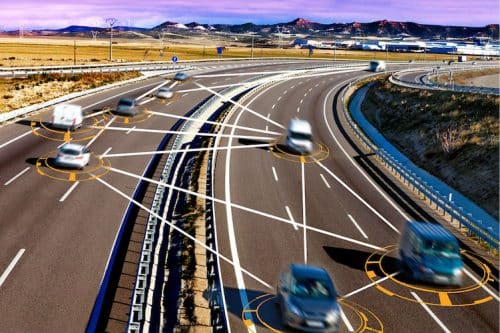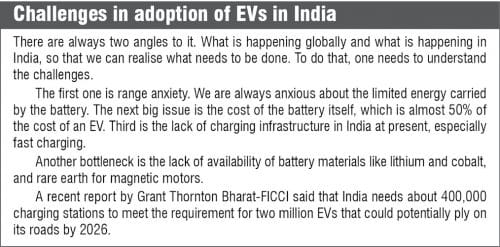The EV sector in India is seeing massive investments rolling in, given the surge in demand for it. Here’s how we can prepare for the disruption in the automotive sector, and tap into opportunities created in the post-Covid-19 era.

The mobility sector in India as well as abroad is witnessing a major change. The change in consumer choices along with the global pandemic has made the players in the sector innovate to survive. The technologies that are crucial to this change are electric vehicles, autonomous vehicles, and the connected vehicles.
As per a report by India Energy Storage Alliance (IESA), in the base case scenario, EV market is expected to grow at a CAGR of 44% between 2020 and 2027 and hit 6.34 million unit annual sales by 2027.
Reskilling has become mandatory even for experienced professionals in order to survive the changes in the mobility sector. A mobility engineer has to be well equipped with skills in mechanical, electronics, and computer science to progress in this profession.
One should take this as a creative break time to introspect about the way we need go about doing things and prepare ourselves for the post Covid world. The question to ask is, how do we imagine sustainable mobility for the future?
If we are keen to create sustainable mobility for the future, we need to entirely reimagine what the building blocks are, and how we are going to bring them together to build the mobility of the future.
New skills, new jobs
It is just not the technological disruptions alone that we need to reimagine mobility for the future, it is a combination of technology and business model disruptions. It is this combination that brings tremendous power and greatly accelerates the changes that are happening around us. The three technology disruptors—electric vehicles, autonomous vehicles, and the connected vehicles—ride on top of a very disruptive business model.
How do we refocus our R&D to enable the vision of sustainable mobility? What are those areas where we should refocus our energies?
There are three aspects to this. One is, what is the objective of automotive R&D, second, what are major shifts revolving around this, and third, what should be the strategy to respond to this shift. The primary objective should be to build a pipeline of technologies that improve product performance and deliver value to the customer. Another would be to explore disruptive technologies and assess their feasibility and suitability to adopt, and to build a strong portfolio of patents that enable commercialisation of the technology.
It is clear when you look at the current internal combustion engines that run on fossil fuels, that there is a saturation of this technology. It is time for us to look at what’s next. This is where EVs come in because of zero emission, higher efficiency, and other attractive features, which makes them a very promising option for replacing the current engine technology.
When this happens, we also need to remember that the performance of the end product, which could be electric, autonomous and/or connected vehicles, is not that of the product alone. It is the product and service together which delivers the end performance to the customer.
There will be certain components that will not be needed in an EV such as certain engine parts, clutch, radiator, and gears. There are also some parts that will continue in EVs such as steering system, seats, brake linings, headlights, and shock absorbers.
There is a whole new range of suppliers that will be created for electric motors, batteries, microprocessors, controllers, etc.

Open sourcing of technology
The technologies that are enabling electric vehicles, autonomous and the connected vehicles are growing exponentially, and their changes are non-linear. Multiple disruptive technologies are converging to co-create a higher level of performance. It is also a business model disruption.
There is a new trend emerging of open sourcing of technology. When it comes to IP creation itself, new players and practices are emerging. In the past, IP was created by the auto industry on its own, now it is a combination of auto and tech professionals who come together to understand and tackle the problem together to create solutions.
We have to visualise future scenarios and create technology roadmaps and align our efforts to these roadmaps. We also have to systematically evaluate the disruptive potential of new technologies and collaborate widely to have open innovation approaches. We should have the right IP approach to promote an encouraging environment.
Recycle and reuse
The prices of lithium and cobalt have been quite volatile, and we need to have a better grip on the demand and supply of these materials. These materials are available only in certain parts of the globe. So, we need to mitigate the risks around the supply of these key battery materials.
We can look at deep sea mining of the critical materials from the oceans. But besides mining of these materials, we should design and use battery packs in such a way that these can be reused and recycled easily.
If we do all of this correctly, we will be able to create a sustainable model of mobility for the future. Today it is all about the ability to reimagine, refocus, reskill, rebuild, and reuse. The future of mobility lies in coherently working on these factors.

Reskilling is the way to go
The future mobility engineers need to have strong engineering fundamentals spanning across three or four divisions of engineering. Though mechanical engineering is still at the heart of it, on either side is electrical engineering and computer science. A mobility engineer in 2030 would need to be equally good in all three domains.
On top of it, a mobility engineer would need integration skills like quality management, systems management, communication, and customer orientation. He should also come with an innovative mindset, ethics, management skills, and be an avid learner.
Sreejani Bhattacharyya is technology journalist at EFY







